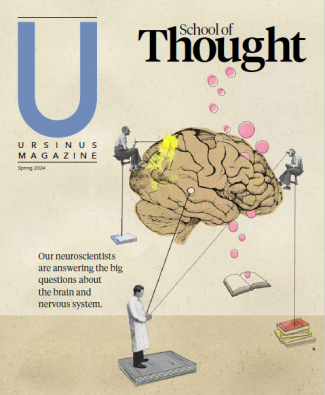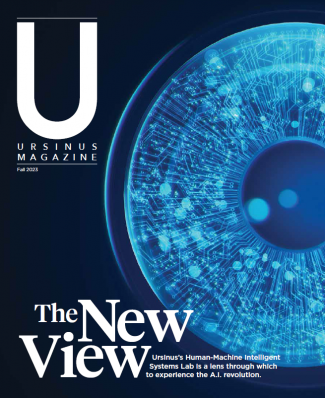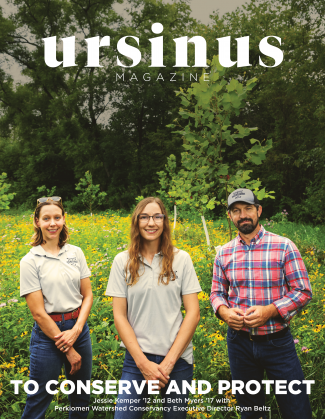
NASA Grant Funds Ursinus Crater Classification Research
Assistant Professor of Physics Kassie Martin-Wells has been awarded a Research Initiation Grant from NASA, which will support work with students in creating a crater classification tool, a significant step forward in planetary science study.
Planetary surfaces—including Earth and the moon—are filled with craters that formed millions of years ago. Counting and classifying those craters reveals much about planetary history, and it’s research that occurs right here at Ursinus College.
NASA has taken notice.
Assistant Professor of Physics Kassie Martin-Wells is the recipient of a Research Initiation Award (RIA) for approximately $169,000 over two years. The RIA program supports and enhances science at smaller institutions that have not historically received NASA funding, and it makes it possible for undergraduate students to perform cutting-edge research.
“It’s a great moment [for Ursinus],” Martin-Wells said. “In order to achieve a diverse workforce that can tackle really the hard questions that NASA faces, it’s important to bring different kinds of educational institutions into the fold.”
Impact craters are formed when an object from space, such as an asteroid, strikes a planetary surface. Primary craters come from the initial impact, and the ejecta thrown from that impact create secondary craters. Among other applications, scientists study the primary craters to determine the age of surfaces in the solar system.
“Millions of secondary craters can form at one time and, hundreds of millions of years later, it’s not always obvious which are secondary craters, and which are primary craters,” Martin-Wells said. “So, when you’re looking at a picture of a surface and you want to know how old it is, you really can’t include any of those secondary craters in your count.”
Distinguishing the craters from one another is a difficult task. They formed (and then degrade) over millions (and even billions!) of years; the topography of the surface can make them hard to distinguish; and the light under which they’re observed varies.
There is a need within the planetary science community for clearer, more transparent, and systemic methods for crater counting and classification, which would be especially useful for undergraduate researchers at colleges and universities across the country doing work just like students in Martin-Wells’s lab.
So, Martin-Wells and the students of Ursinus’s planetary cratering research group are using the NASA funding to create a method for crater counting that is accessible to undergraduate students with minimal prior experience in the field.
“There is a wealth of publicly available data taken from different NASA missions and instruments that help us identify impact craters,” Martin-Wells said. “Our goal is to write software that will automatically gather information from different datasets and help us make final decisions on distinguishing between primary and secondary craters.”
By making the data more accessible to undergraduates, students can more readily participate in planetary science research, therefore better preparing them to become part of NASA’s future workforce.
The NASA funding will also allow Ursinus students to travel to conferences, furthering networking experiences for the early career scientists. Up next for Ursinus students: Planetary Crater Consortium workshops in Flagstaff, Ariz.; the Lunar and Planetary Science Conference in Houston, Tex.; and a European Planetary Science Congress meeting in Helsinki, Finland.
“This research really involves our student researchers in all stages of the scientific process and leverages their skills as liberal arts students who are big-picture thinkers and capable of solving an open-ended problem with no clear path to solution,” Martin-Wells said.


